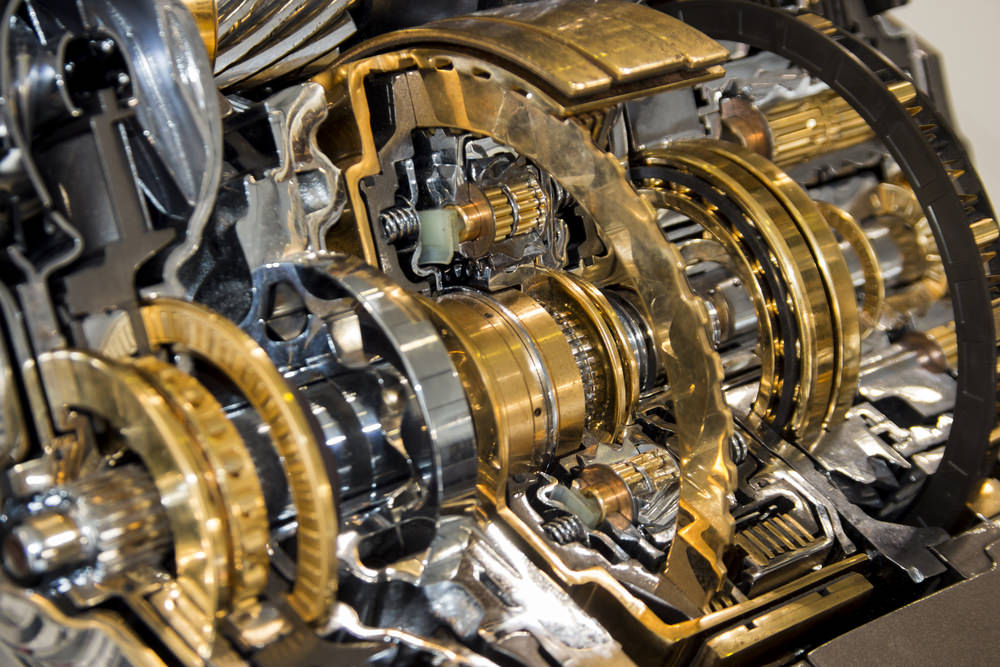

Aspiring mechanics spend hours learning about how main gears and planetary gears work in a car transmission, so a full dissertation simply isn’t possible within this relatively brief article. If you’re curious about how they work, though, this brief overview should help.
Manual transmission
A manual transmission is operated by means of a clutch and a moveable stick. The driver selects the gear, and can usually move from any forward gear into another without having to go to the next gear in the sequence. The exception to this would be some types of race cars, which allow the driver to select only the next lower or next higher gear – this is what’s known as a sequential manual transmission.
In any manual transmission, there is a flywheel attached to the crankshaft, and it spins along with the crankshaft. Between the flywheel and the pressure plate is a clutch disk. The function of the pressure plate is to hold the clutch disk against the flywheel. When the clutch pedal is up, the flywheel causes the clutch plate to spin. When the clutch pedal is down, the pressure plate no longer acts on the disc, and the clutch plate stops getting power from the engine. This is what allows you to shift gears without harming your car transmission. A manual transmission is characterized by selectable gear ratios – this means that selected gear pairs can be locked to the output shaft that’s inside the transmission. That’s what we mean when we use the term “main gears.” An automatic transmission, on the other hand, uses planetary gears, which work quite differently.
Planetary gears and the automatic transmission
The basis of your automatic transmission is what is known as a planetary, or epicycloidal, gear set. This is what allows you to change your car gear ratio without having to engage or disengage a clutch.
A planetary gear set has three parts. The center gear is the sun. The smaller gears that rotate around the sun are known as the planets. And finally, the annulus is the ring that engages with the planets on the outer side. If you were wondering how planetary gears got the name, now you know!
In the gearbox, the first gear set’s planet carrier is connected to the ring of the second gear set. The two sets are connected by an axle which delivers power to the wheels. If one part of the planetary gear is locked, the others continue to rotate. This means that gear changes are easy and smooth.
The typical automatic gearbox has two planetary gears, with three forward gears and one reverse. 30 years ago, cars had an overdrive gearbox in addition to the main gearbox, to reduce the engine RPM and “stretch” the high gear with the idea of achieving fuel economy during highway driving. This overdrive used a single planetary. The problem was that this actually increased RPM rather than reducing it. Today, automatic transmissions have absorbed the overdrive, and the configuration is now three planetaries – two for normal operation and one to act as overdrive, yielding four forward gears.
The future
Some vehicles now actually squeeze out five gears using three planetaries. This type of 5-speed or 6-speed gearbox is becoming increasingly common.
This is by no means a comprehensive discussion of main gears and planetary gears. If you want to learn more about how your car transmission works, there are countless online resources that will deliver information that’s just as complex as you want it to be.



